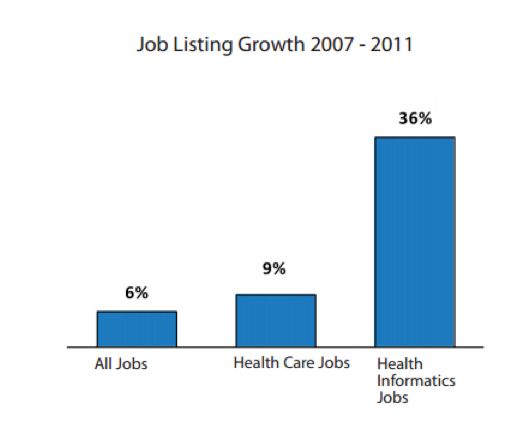Part 2: What does the career path of a dental office manager look like?

In the first article of this series, we established that the dental office manager is a dental team career path (even though the ADA doesn’t recognize it as such). With this in mind, what will this critical position look like in the future of dentistry?
Already, the ADA has its eye on some “New Proposed Dental Careers” of Community Dental Health Coordinator and Oral Preventive Assistant. A Community Dental Health Coordinator is a future career path for a hygienist. Often targeting underserved communities, this person coordinates dental care through social workers and other medical professionals through existing state-funded programs. The Oral Preventive Assistant is an even newer concept, offering an alternative career path for dental assistants who prefer the people-side of dentistry to the surgical side. Both these positions recognize the wider role of healthcare and are an attempt to include oral health in the mix.
So, what about a future career path for dental office managers?
One of the hottest careers today in the medical world is Healthcare Informatics. Described as the intersection of information science, computer science, and healthcare, this person helps to improve patient care through technology. I highly recommend reading
by Burning Glass Technologies published May 2012, here are a few of their findings:
Fast job growth
Check out this amazing graph! Burning Glass did a study of the online job postings over five years and discovered that healthcare informatics-related jobs were growing at an unbelievable rate of speed during one of the worst recessions our country has experienced in its history.

Open to all education levels
Another great thing about healthcare informatics work is that you can get into this field with as little as a 2-year degree and you can continue to advance your career through certifications and even up to bachelors, masters level work. Check out this visual to see the 10-year career map available to someone in the healthcare informatics field.
Take a minute and you can see this for yourself. Just go to your favorite job board and enter “Healthcare Informatics.” You’ll be amazed by the opportunities you’ll find.
Okay, so how does healthcare informatics relate to dental office managers? I’m glad you asked. You may have noticed the trends affecting dentistry these days:
The rapid growth of group practice
Insane levels of dental school debt
The financial pressure of PPO plans on dentists fees
The effect of online reviews on selecting a dentist
Government involvement increasing through HIPAA and the Affordable Care Act including dental care for children
I believe the upshot of all these trends is that dental offices are following medicine, but we have the opportunity to stay more in control of our practices (compared to physicians, who were eaten up by hospitals and have lost their independence). To survive, and thrive in the future of dentistry, more dental group practices will be created. Since dental school graduates cannot afford to start their own practice due to school debt of $250,000, they will continue to join group practices. As a group practice, dentists have a better chance of negotiating PPO fees, of hiring smart marketing firms, and they will also need to hire talented dental office managers, who are also known as administrators when the practice size grows substantially.
So, as we look at dental administrators for these large group practices we also recognize the trends of the healthcare informatics profession. A dental office manager is effectively acting as the “medical coder” for the practice. Using valuable resources such as Charles Blair’s Coding with Confidence or the Insurance Solutions Newsletter, a dental office manager is responsible for entering codes on patients day-in and day-out to receive reimbursement for treatment. At a higher level of business management, a dental administrator can use the coding information in order to provide analysis to dentists to help them make better decisions about their practice. For example, let’s say you’re working in a group practice with an oral surgeon and a general dentist, and they coordinate together to place and restore implants. The administrator can (and should) create an analysis by looking at the codes being charged out for each provider, then match up the associated lab and implant fees for each in order to show the gross profit per procedure. When I did this analysis for a group practice, the owner-dentist realized how upside down the profit margin was the periodontist placing the implant only had to pay for the implant while the general dentist was responsible for the abutment and crown plus taking time to create the surgical guide for the surgeon! Since the referrals also were primarily generated by the general dentist, the specialist was motivated to maintain the relationship and supported a more equitable allocation of costs as well as the addition of a fee for the surgical guide which went directly to the general dentist.
As the regional group practice model evolves, have you heard of The Summit conference? This small conference offers dentists an opportunity to meet and learn how to organize together to create a multi-location group practice in order to increase their buying power and reduce common expenses. Dental administrators are needed to run these groups, and dental office managers with solid experience and some business training can take these opportunities. If you can make Dentrix and Eaglesoft sing, you’re way ahead of a retail-trained person who has been brought into dentistry to manage based on their background because you understand the clinical care center of dental practice.
I believe another position for dental office managers will be created in the future dental information manager. This person would work for a large group practice and be responsible for using the data created in each office to improve clinical care, patient experience and dental insurance reimbursement. Dental insurance plans are already looking for outliers on the overtreatment side dentists who place crowns unnecessarily and these dentists are required to jump through additional administrative hoops in order to maintain their membership in that PPO. This is happening today in dentistry. In medicine today, hospitals are not paid if a heart attack patient is readmitted to the hospital within 30 days after treatment. This translates into the PPO having the power to not pay the hospital for additional treatment because they are moving into paying for wellness, rather than constantly paying for sick care. Think about that for dentistry. What if dentists were not reimbursed by the PPO beyond the first filling done on a tooth? How will dentists be paid for wellness?
The Dental Quality Alliance is starting to ask those questions. Once clinical standards are established in dentistry, profit-driven dental insurance plans will be looking for new ways to cut their reimbursements. These clinical standards will be a new opportunity for the PPO to market themselves to employers by saying they have a dental wellness product just like the medical wellness product the employer has already purchased. The good news here is that our interests will be aligned the dentists who improve patients health will also be reimbursed at a higher rate, while the inverse will also be true, dentists that simply patch and crown with no overall approach for their patients to improve their oral health, will receive a lower level of reimbursement.
So, who do you think is going to have the skill set to understand the clinical care of dentistry and combine that with the knowledge of dental codes and add that into the business analytics skills to show dentists what their performance is compared to these new clinical standards? It’s the dental information manager. I can imagine this person translating national quality standards into comparable statistics for the dentists in their group, perhaps working with clinical teams to provide the results of the care provided so dentists, hygienists, and specialists can make changes to protocol and then again, see the measure of their success. Perhaps the dental information manager develops a strong relationship with the dental practice software company so that the fields available for tracking make sense and are easy to access. In this position, a dental information manager can have a significant effect on the health care of those patients without ever having clinical training.
As the business of dentistry evolves, the opportunities for dental office managers will explode even if today the ADA doesn’t recognize that we exist! Already, we know the difference we make in the dental practice. Soon, our roles will expand as the trends in healthcare informatics meet the new normal of dentistry where dental group practice follows the lead of medical wellness. I look forward to seeing you there!
ACTIVA BioACTIVE Bulk Flow Marks Pulpdent’s First Major Product Release in 4 Years
December 12th 2024Next-generation bulk-fill dental restorative raises the standard of care for bulk-fill procedures by providing natural remineralization support, while also overcoming current bulk-fill limitations.